TechRadar Verdict
Hyrule Warriors: Age of Imprisonment is a huge improvement over Age of Calamity. It offers more characters with interesting move sets, decent performance, and a story that doesn’t relegate itself to being a meaningless ‘what if’ scenario. Said story here does miss some open goals here and there, and the inevitable Musou repetition can set in during longer sessions. But overall, Age of Imprisonment delivers an incredibly satisfying Warriors experience with delectable Zelda flavor.
Pros
- +
Tons of characters that are great fun to play as
- +
Creative use of Tears of the Kingdom’s mechanics
- +
Snappy side missions keep the pace brisk
- +
Enjoyable map progression
Cons
- -
Elite enemies and bosses can be spongey
- -
Missed opportunities in places of the story
- -
Defensive battles feel like busy work
- -
No side modes
Why you can trust TechRadar
Hyrule Warriors: Age of Imprisonment is the third game in this Koei Tecmo-developed subseries, following non-canonical Breath of the Wild side story Hyrule Warriors: Age of Calamity and the excellent original Hyrule Warriors that acted more like a celebration of the franchise as a whole. It's also another much-needed Nintendo Switch 2 game exclusive for the platform's first year.
Platform reviewed: Nintendo Switch 2
Available on: Nintendo Switch 2
Release date: November 6, 2025
Age of Imprisonment differs from its predecessors in that it adheres to the canon of the series, specifically acting as a prequel to the events of The Legend of Zelda: Tears of the Kingdom. The Imprisoning War is something we learn much about in that game, and the premise is a match made in heaven for the Warriors franchise’s ‘1 vs 1,000’ brand of hack n’ slash combat.
Age of Imprisonment is handily the most refined, polished, and satisfying Zelda-flavored Musou to date. For one, it’s a game I’m thankful is exclusive to Nintendo Switch 2, completely avoiding the subpar resolution and glacial frame rate of its predecessor, Age of Calamity, on the original Switch hardware.

It’s also a vast improvement in terms of combat in general. So much creativity has been squeezed out of the simple ‘light into strong attack’ combo strings the Warriors franchise is known for. But on top of that, there are powerful Sync Strikes between characters, multiple weapon types, Tears of the Kingdom-esque Fuse attacks with monster parts, and elemental reactions with the environment.
At around 30 hours (or less if you just beeline the main story missions), it’s pretty compact by Warriors game standards, too. While there’s plenty to do after the credits roll, Age of Imprisonment thankfully does not overstay its welcome, and I felt immensely satisfied with my time with the game overall.
Can’t believe that Ganondorf fella
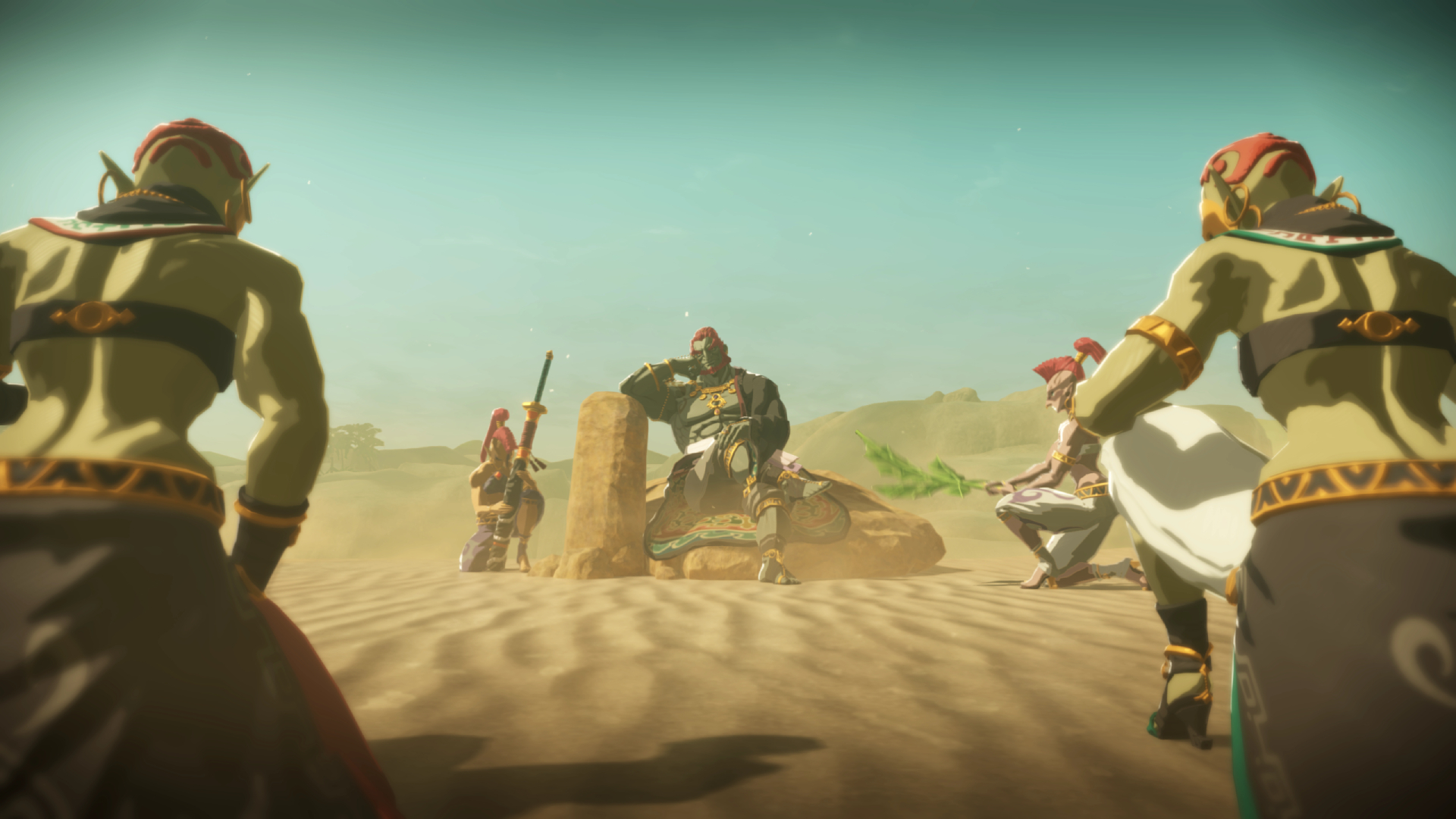
If you’ve played Tears of the Kingdom and experienced its flashbacks to the Imprisoning War, then you know what to expect in terms of story in Hyrule Warriors: Age of Imprisonment. What this game does is flesh out that conflict, focusing on individual battles across the land of Hyrule, and the rebellion that helped quell Ganondorf’s invasion - however temporarily.
The game begins right after Princess Zelda is transported back in time after encountering Ganondorf’s ancient husk at the start of Tears of the Kingdom. We’re quickly introduced to King Rauru, Queen Sonia, and Rauru’s scholarly sister Mineru, the resident expert on ancient Zonai technology. From there, we set out to recruit the leaders of Hyrule’s various races to form a united front against the King of Evil.
Sign up for breaking news, reviews, opinion, top tech deals, and more.
One complaint I have, though, is that this feels like the safest way of going about showing a Tears of the Kingdom prequel. Outside of one or two endearing characters, there’s very little in the way of character development or interesting lore elements built upon here. Even Zelda herself largely takes a backseat, with much of the plot revolving around King Rauru and a mysterious construct that totally, definitely isn’t a way of shoehorning a Link-style character into the game. Ultimately, it’s another round of ‘Ganondorf has been a very naughty boy.’
That’s not to say the story in Age of Imprisonment doesn’t have its high points. Said mysterious construct is the most interesting aspect of the game’s plot, and its inclusion is handled in a deft and satisfying way, narratively speaking. But I was definitely hoping for more moments for Zelda herself to shine. Instead, she’s very much an afterthought once the plot gets moving properly, and that’s a massive shame given how integral she is to the events of both Breath of the Wild and its sequel.
Bring the light
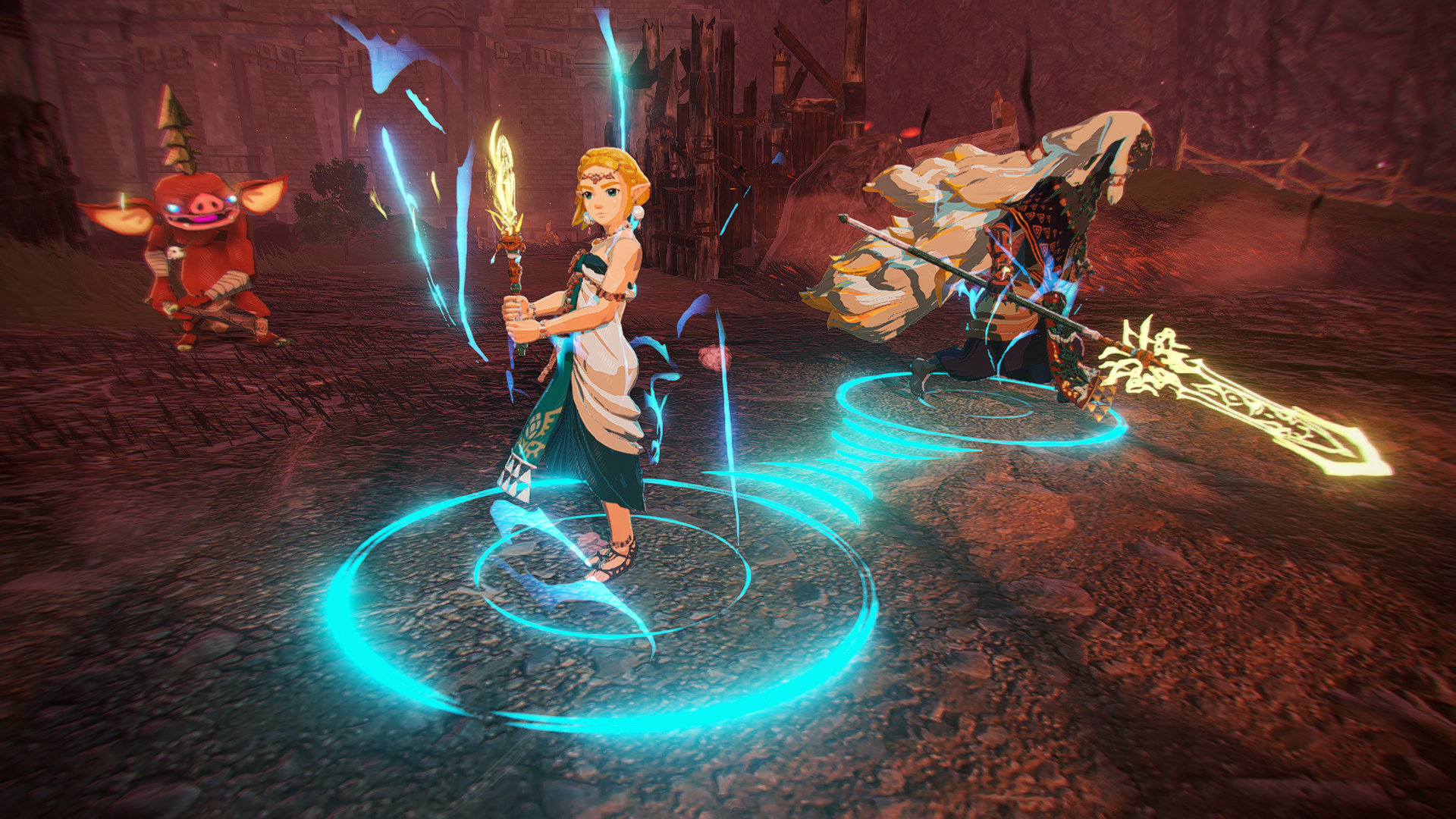
But okay, I hear you; this is a Warriors game first and foremost. Surely any shortcomings brought by the story can be made up for in the gameplay department, right? Well, if you’re here simply to know whether or not Age of Imprisonment is a better game than Age of Calamity, the answer to that is a resounding yes. And it’s not close.
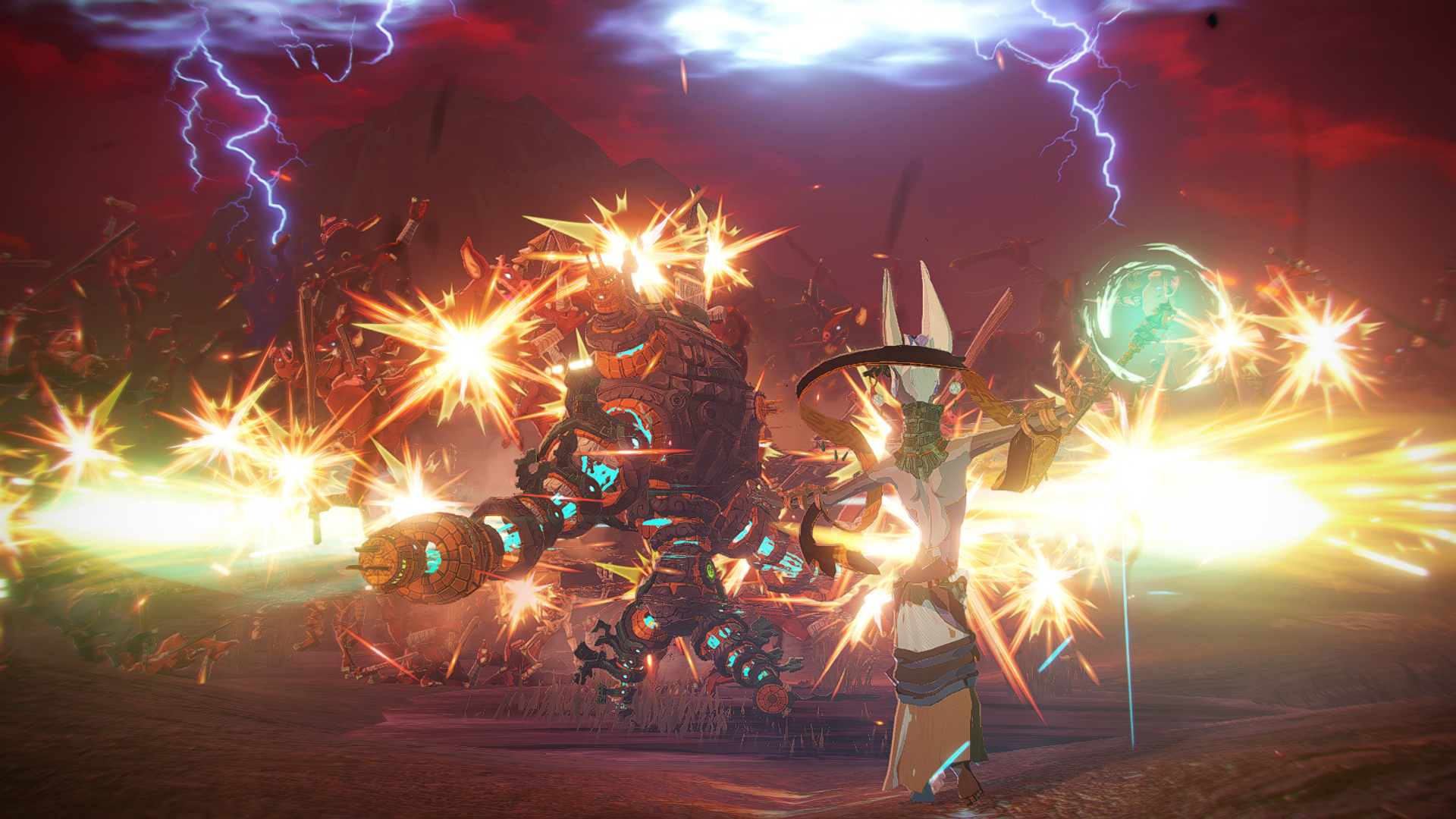
Koei Tecmo has done a brilliant job fleshing out the playable roster of Age of Imprisonment. While most were made exclusively for this game and have little in the way of personal story, they all have unique move sets and abilities that are generally tons of fun to play as and improve through the game’s progression systems.
Obviously, it helps that Age of Imprisonment is running on better hardware. Image quality can be just a touch soupy at times (it appears to be using dynamic resolution to keep things smooth), but the game does a great job of maintaining a solidly high frame rate most of the time. I only ever encountered dips during the most bombastic special attacks, and really, that kind of slowdown is all good in my books.
Performance aside, Age of Imprisonment just does so much to make combat more interesting than both prior Hyrule Warriors games. It still uses that ‘light and strong attack’ combo system that governs most Warriors titles, but this game is far from a one-trick pony in that regard.
Most missions in Age of Imprisonment will have you controlling a team of two to four heroes, which you can switch between with a quick press of the d-pad. Large-scale maps usually encourage you to give orders to your roster of allies, which you can do easily by accessing the map from the pause menu.
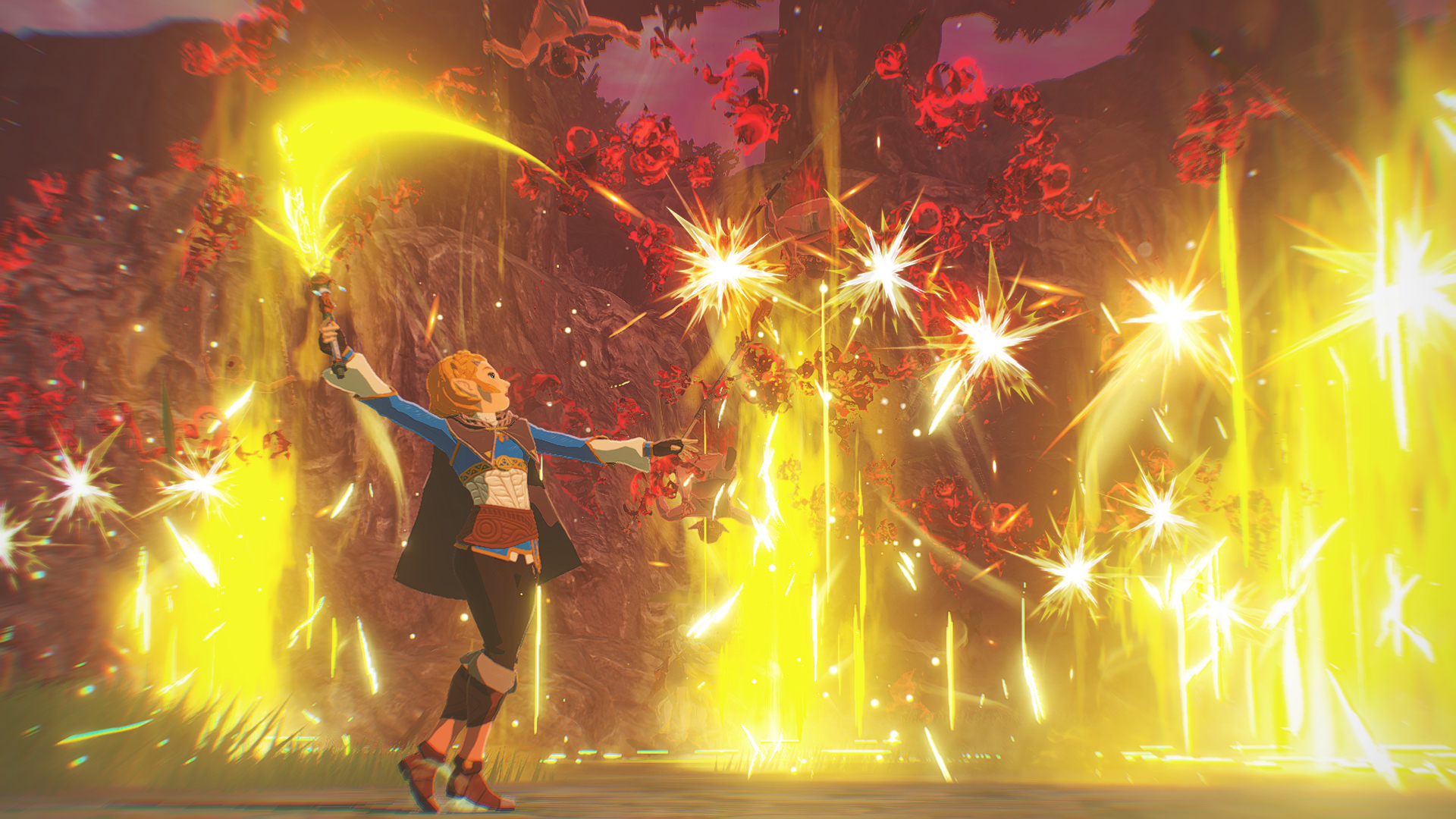
It’s here where each of your heroes’ strengths can really come into play. Zelda and Rauru, for example, have many light-element attacks, and thus are great against shades or gloom-inflicted enemies. Meanwhile, Qia, princess of the Zora, can use water to quickly demolish fire-shielded enemies or ones coated in sludge. You can even cause elemental chain effects, such as electrifying bodies of water or setting Rito sage Raphica’s bow-generated whirlwinds ablaze with fire.
Beyond that, you’ve got Sync Strikes, something of a coup de grace and the most satisfying abilities to pull off in Age of Imprisonment. When two characters have their Sync gauges maxed, they can team up (punctuated by an incredibly cool high-five cut-in animation) to perform a devastating Chrono Trigger-esque coordinated attack. Some pairs have unique, more powerful Sync Strike synergies to make use of - something to think about when putting together your team for any given mission.
But it doesn’t even stop there. Your warriors can also make use of Zonai devices to exploit enemy elemental weaknesses or counter certain powerful (and unblockable) attacks. These are always so fun to use, and are easily the best way of diminishing enemy weak point gauges for a critical strike. There’s just so much any given character can do, and I’m glad Koei Tecmo leveraged some of Tears of the Kingdom’s coolest mechanics and put its own unique spin on them.
Motley crew
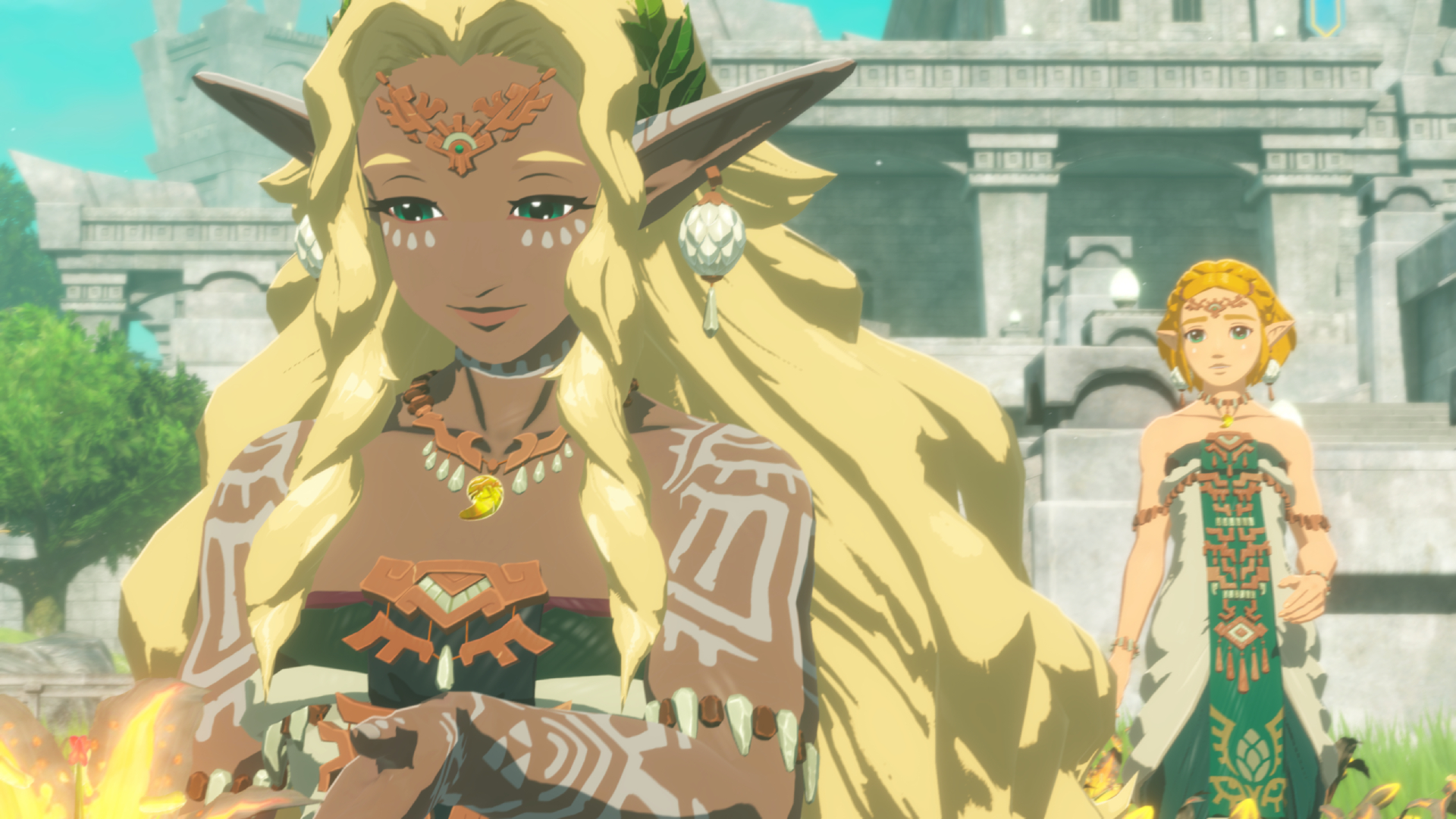
About half of Age of Imprisonment’s roster are characters unique to this game. These are pretty much background characters with little in the way of personal story beats, but they’re nonetheless incredibly fun to play as. These heroes, along with the mysterious construct, are actually able to make use of different weapons like greatswords and spears.
Furthermore, most can access the Fuse system, returning here from Tears of the Kingdom. Monster parts you collect from enemies can be attached to these weapons, and like in that game, they offer a variety of effects here. Some can dish out elemental damage, while others are great for quick weak point gauge breaking.
You’ll want to use these sparingly, however, as monster parts - as well as other materials gathered in missions - can be used to upgrade your heroes. The overworld map screen contains a smattering of side quests and ability-improving nodes that you pump required resources into to unlock enhancements. These range from granting extra health or special attack gauges to entirely new moves and features. If you don’t meet a node’s requirements, you can mark it with the Zonai sensor, which will show you all the missions, shops, and side activities where you can gather the necessary materials.
Progression is generally breezy in Age of Imprisonment, though one type of side mission that did irk me was the defensive engagements. These frequently show up on the map and are essentially contested territory. If not cleared within a certain amount of time, the territory will be reclaimed by Ganondorf’s forces, thus locking out any outposts or ability nodes until you win it back.
Defensive missions can show up at an alarmingly quick rate, and while they do offer materials, it just starts to feel like busy work after a few. Especially when you have to divert your attention from other side missions and upgrades to prioritize them. I’d be a bit more forgiving if they happened only every now and then, but you’ll almost always have one on the map to deal with at any given time.
Should you play Hyrule Warriors: Age of Imprisonment?

Play it if...
You love Tears of the Kingdom
If you simply want more from the Breath of the Wild/Tears of the Kingdom rendition of Hyrule, you’ll find it here. This isn’t a giant open sandbox by any means, but if you really like the vibe of those recent mainline Zelda titles, Age of Imprisonment successfully recaptures that.
You were disappointed by Dynasty Warriors: Origins
While I loved Origins’ gameplay, its reliance on a sole character was a huge sore point for me. Age of Imprisonment, meanwhile, has plenty of heroes to play as, all with unique move sets and abilities.
Don't play it if...
You're hoping for extra modes
Sadly, there’s nothing like the original Hyrule Warriors’ awesome Adventure Mode, where you could unlock new weapons, characters, and costumes. Granted, it probably wouldn’t fit as well here, but outside of some post-game missions, there’s not much to keep you coming back after the credits roll.
You want a satisfying story
Age of Imprisonment does bridge the gap between the Imprisoning War and Tears of the Kingdom, but it does so in a largely uninteresting manner. Don’t expect much in the way of fun or heartfelt character moments, or an engaging plot overall.
Accessibility
There isn't much in the way of substantial accessibility settings in Hyrule Warriors: Age of Imprisonment. Options to display combo guidance on screen are nice, as are text and voice options for several languages, including English, French, German, Spanish, Latin American, Dutch, Japanese, and more.
How I reviewed Hyrule Warriors: Age of Imprisonment
I played Hyrule Warriors: Age of Imprisonment for 30 hours for this review. That play time encompassed the entirety of the main campaign, as well as around 60-70% of side missions and activities.
I played on Nintendo Switch 2 in both docked and handheld modes, though I ultimately preferred docked mode with a Nintendo Switch 2 Pro Controller thanks to its more stable performance. The game is by no means bad or unplayable portably, but the larger screen size of my LG CX OLED TV helped the busy on-screen action become much easier to parse.
I’m a huge fan of both the Warriors and Zelda franchises, and I’ve poured hundreds of hours into the original Hyrule Warriors and other titles in the series besides. In that sense, I can see where Age of Imprisonment improves on its predecessors, as well as areas I think it could have handled better.
First reviewed October/November 2025

Rhys is TRG's Hardware Editor, and has been part of the TechRadar team for over four years. Particularly passionate about high-quality third-party controllers and headsets, Rhys strives to provide easy-to-read, informative coverage on gaming hardware of all kinds. As for the games themselves, Rhys is especially keen on fighting and racing games, as well as soulslikes and RPGs.
You must confirm your public display name before commenting
Please logout and then login again, you will then be prompted to enter your display name.
